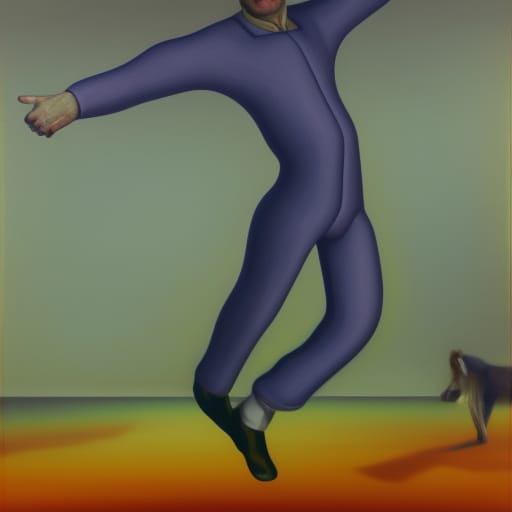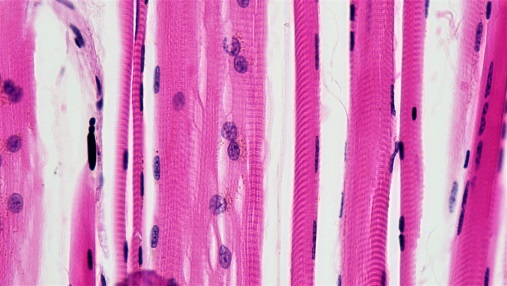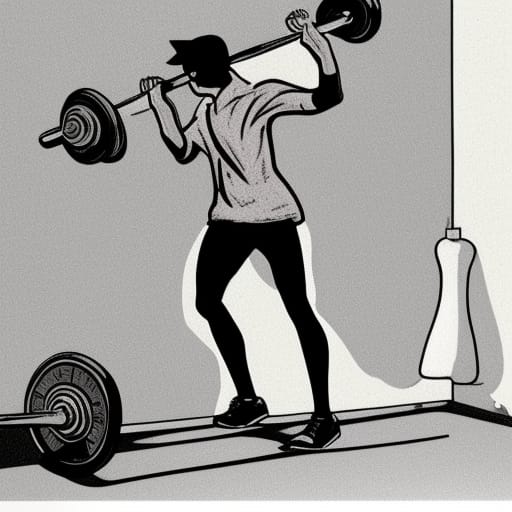Neuroscience For Kids
Proprioception
By Sara Pierce-Lundgren, Neuroscience for Kids Guest Writer
August 23, 2023
 Proprioception, also known as our "sixth sense," is the ability to know
where our limbs are positioned as we and the world move through time and
space. If we trip, we move our hands in front of us reflexively to catch
ourselves. But how do we respond to these movements so quickly, without
even having to think about it? With our eyes closed, how do we know if
our fingers are balled up into fists or relaxed? It would be very
difficult to move around or do many things at once if we didn't.
Proprioception, also known as our "sixth sense," is the ability to know
where our limbs are positioned as we and the world move through time and
space. If we trip, we move our hands in front of us reflexively to catch
ourselves. But how do we respond to these movements so quickly, without
even having to think about it? With our eyes closed, how do we know if
our fingers are balled up into fists or relaxed? It would be very
difficult to move around or do many things at once if we didn't.
Our proprioceptive senses, like other sensory systems, are controlled by the neurons in our nervous system. There are different types of proprioceptive neurons that detect different characteristics of muscle activity that are important for our day-to-day movement. Some of these characteristics include stretch, tension, and force of the muscle groups and their proprioceptors.
 In humans, there
are two main types of proprioceptive cells: muscle spindles and Golgi
tendon organs. Muscle spindles are sensory neurons that are wrapped
around individual muscle fibers and are responsible for sensing stretch
and length of a muscle group. When muscle fibers (figure on the left)
are stretched, the muscle spindle axons change shape and open
mechanically gated ion channels that cause the neurons to fire.
In humans, there
are two main types of proprioceptive cells: muscle spindles and Golgi
tendon organs. Muscle spindles are sensory neurons that are wrapped
around individual muscle fibers and are responsible for sensing stretch
and length of a muscle group. When muscle fibers (figure on the left)
are stretched, the muscle spindle axons change shape and open
mechanically gated ion channels that cause the neurons to fire.
The message is then relayed to the spinal cord, which then causes alpha motor neurons connected to the muscle fibers to fire and subsequently move muscle groups. For example, when you are holding a cup, your muscle spindles are in a resting state. When someone decides to fill your cup with water as you are holding it, muscle spindles in your biceps are stretched. Signals generated by this activity are sent to your spinal cord and then go back to the muscle to make your bicep contract and hold the cup at an even position. This is the stretch reflex!
 Golgi tendon organs are located in between muscle fibers and tendons.
These proprioceptors are made of collagen fibers and sensory neurons
that go to the spinal cord. Golgi tendon organs are primarily
responsible for sensing tension and force of muscle groups. When the
collagen fibers are stretched from a heavy load, Golgi tendon organ
neurons fire and activate an inhibitory neuron in the spinal cord that
is connected to the corresponding muscle groups' fibers. Golgi
tendon organs are so important because they prevent us from damaging our
tendons by pulling them off our bones. For example, when lifting a
weight that is heavier than we can manage, we reflexively drop the
weight instead of injuring ourselves.
Golgi tendon organs are located in between muscle fibers and tendons.
These proprioceptors are made of collagen fibers and sensory neurons
that go to the spinal cord. Golgi tendon organs are primarily
responsible for sensing tension and force of muscle groups. When the
collagen fibers are stretched from a heavy load, Golgi tendon organ
neurons fire and activate an inhibitory neuron in the spinal cord that
is connected to the corresponding muscle groups' fibers. Golgi
tendon organs are so important because they prevent us from damaging our
tendons by pulling them off our bones. For example, when lifting a
weight that is heavier than we can manage, we reflexively drop the
weight instead of injuring ourselves.
The information from proprioceptors integrates in the spinal cord and combines with many other sensory pathways like the visual system and vestibular system to help us maintain our posture and stance even when something unexpected happens. This is the power of proprioception! We can know, without having to stop and think or even look, where our limbs are and how to respond to the busy, always-moving world around us. If we trip and fall, we can trust our proprioceptive senses to catch us.
References:
- Moon, K.M., Kim, J., Seong, Y., Suh, B.C., Kang, K., Choe, H.K. and Kim, K. Proprioception, the regulator of motor function. BMB Rep., 54:393-402, 2021.
- Marasco, P.D., de Nooij, J.C. Proprioception: A New Era Set in Motion by Emerging Genetic and Bionic Strategies? Annu Rev Physiol.,10:85:1-24, 2023.
- Agrawal, S., Dickinson, E.S., Sustar, A., Gurung, P., Shepherd, D., Truman, J.W. and Tuthill, J.C. Central processing of leg proprioception in Drosophila, eLife. 2020. 9:e60299, https://doi.org/10.7554/eLife.60299.
Copyright © 1996-2023, Eric H. Chudler All Rights Reserved.